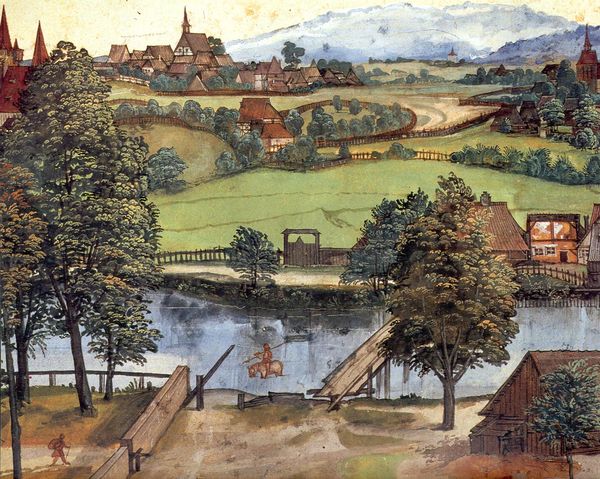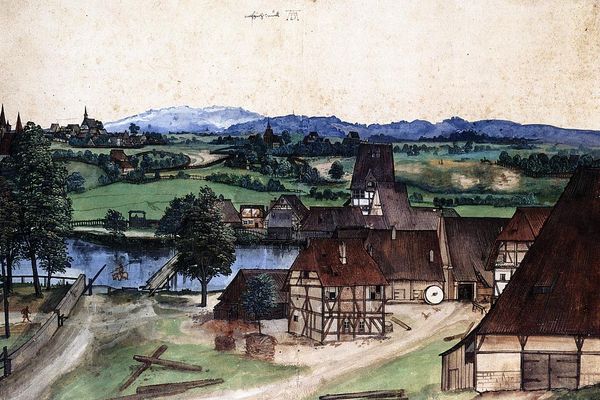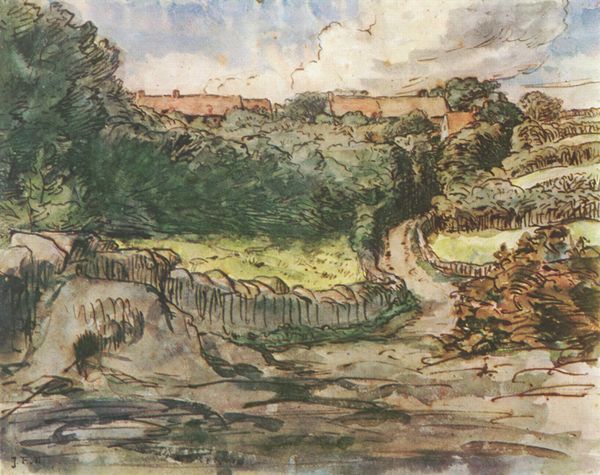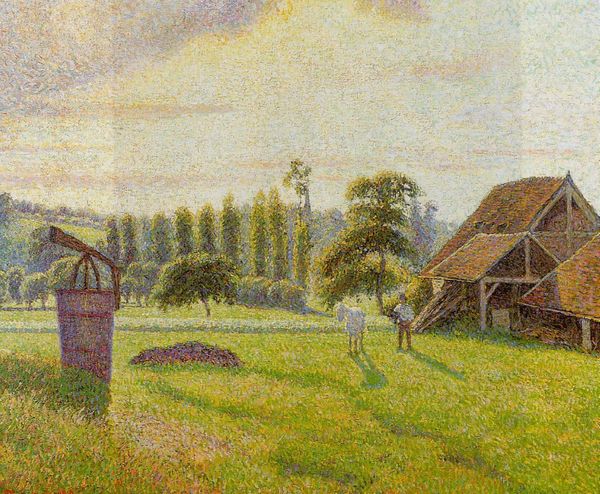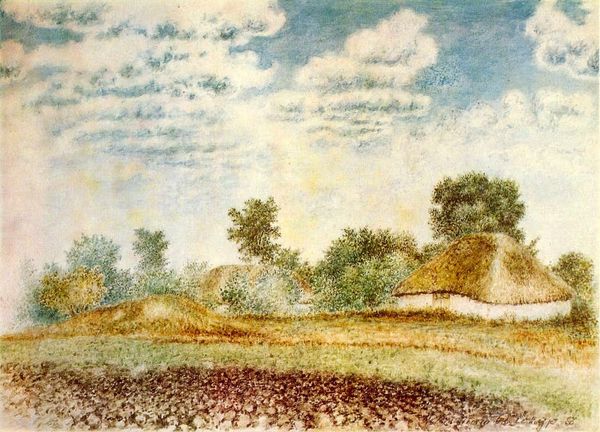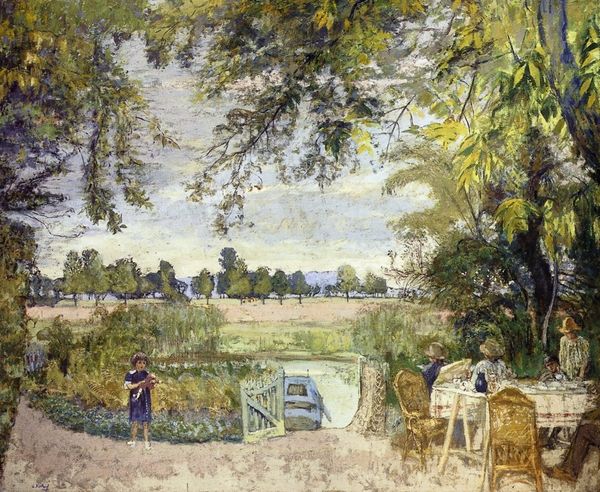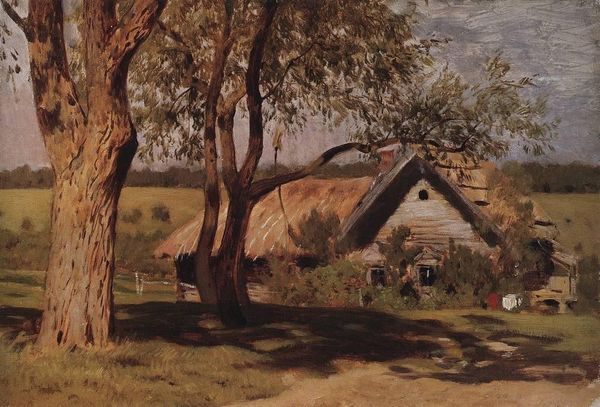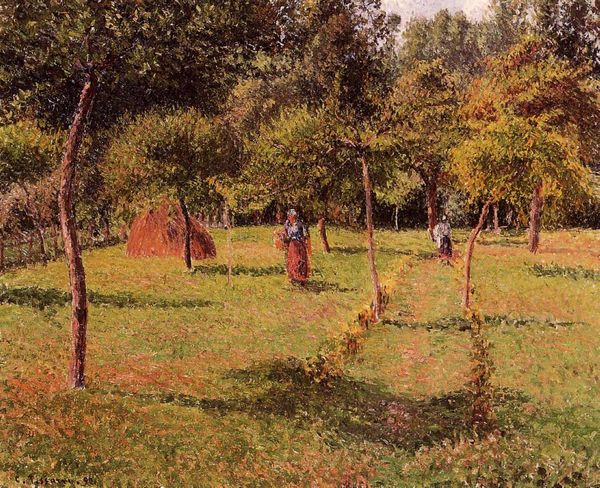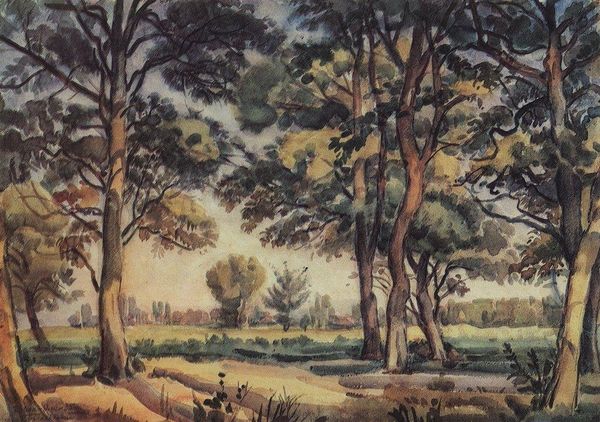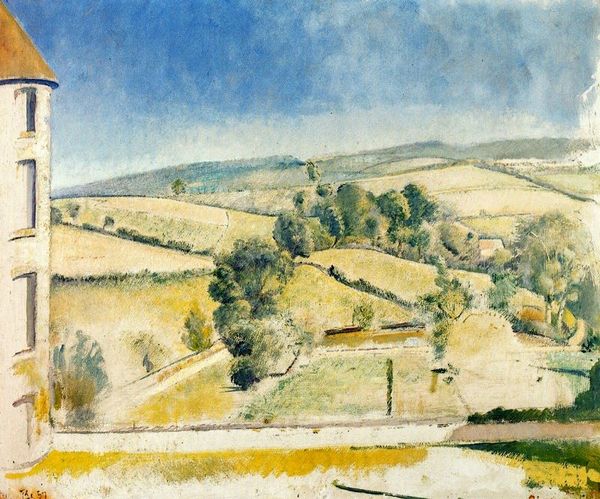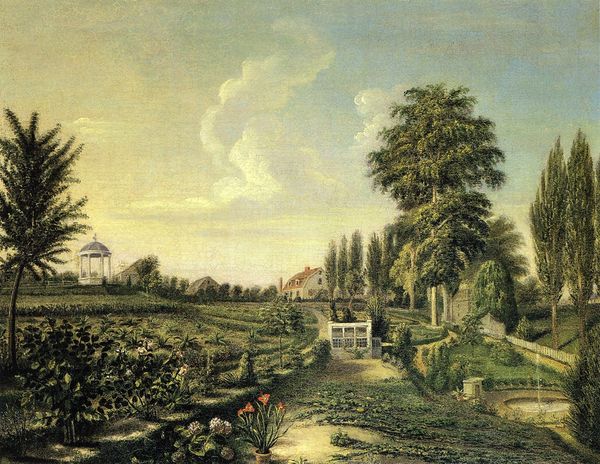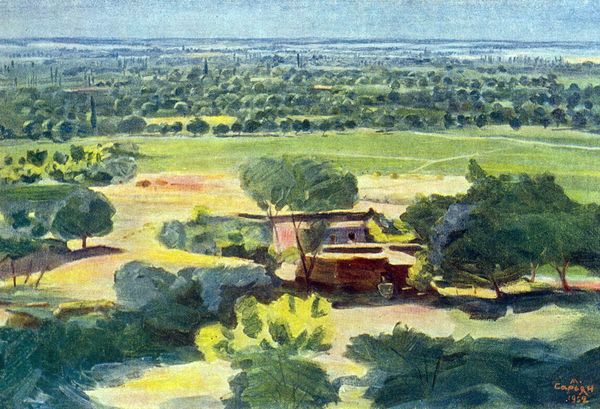
painting, oil-paint
#
rural-area
#
painting
#
impressionism
#
oil-paint
#
landscape
#
impressionist landscape
#
france
Dimensions: 81 x 65 cm
Copyright: Public domain
Curator: Welcome. Today, we are observing Camille Pissarro's "View Through a Window, Eragny," an oil painting completed in 1888. It currently resides here at the Ashmolean Museum in Oxford. Editor: It’s extraordinarily peaceful; almost pastoral. The stippled brushstrokes give the whole scene a soft, dreamlike quality, as though you are not only observing the countryside, but also participating in an exercise in visual perception itself. Curator: Precisely. Pissarro was deeply involved with Impressionist and later Pointillist techniques at this stage in his career. You can see that divisionist technique quite explicitly in the fields and foliage. It’s about capturing the optical effects of light and color, reducing form to discrete points. Editor: Yes, the reduction to “points” could mirror the very real political concerns around divisions of labor and economic inequities of late 19th-century French society. I mean, this isn't simply a pretty landscape—it's a window into rural life, one that at this time was quickly diminishing because of capitalist development. Look at the single female figure in the painting attending to chickens. The art historical record indicates this might well have been his maid, Julie. Curator: I understand your read, and the artist certainly spent some time in anarchist circles and corresponded with many figures like Jean Grave and Peter Kropotkin; however, what I observe more acutely here is Pissarro's remarkable commitment to pictorial structure. See how the architecture frames the middle-ground; how this division echoes the very perspectival arrangement? And how the color scheme harmonizes it all. There's this lovely, rigorous geometry to it all. Editor: But how can we disconnect form from content, Curator? Pissarro was rendering a rapidly changing world, one that faced great upheaval, both political and environmental. By calling our attention to the technique and its implicit contradictions, he implicitly addresses the problem of perception within the world. Are we seeing clearly? Whose perspective do we really inhabit when we look at any view? Curator: I grant you the importance of these contextual factors. Still, I find immense visual delight in the way he's articulated the density of light and space through pointillist touches. Editor: Agreed. It’s both lovely and unsettling—much like our own contemporary moment. What a potent window. Curator: It surely is!
Comments
No comments
Be the first to comment and join the conversation on the ultimate creative platform.
